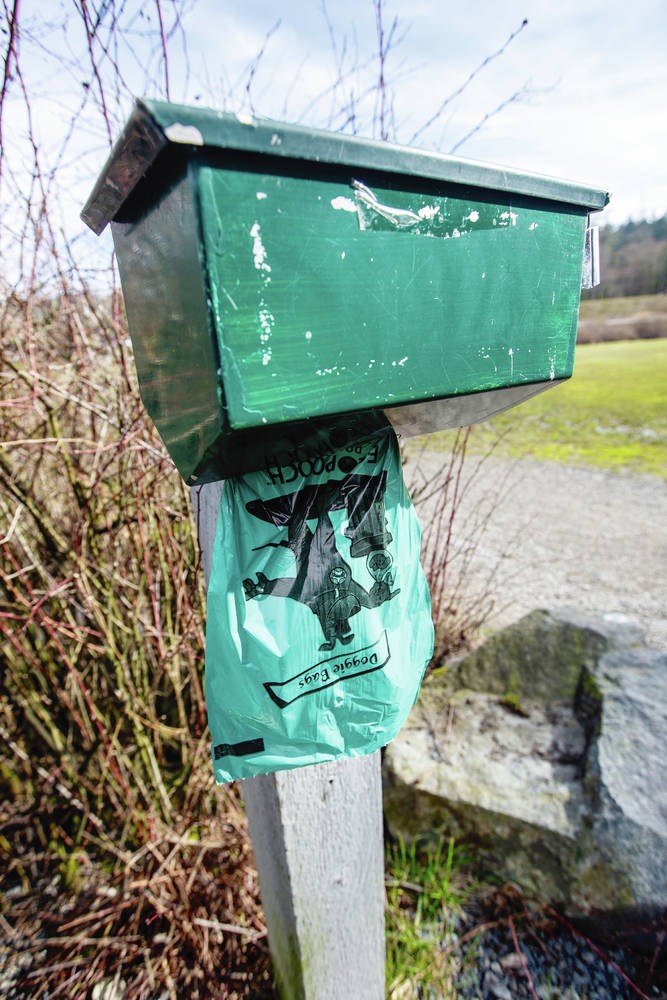I know a guy who, having just moved into a new house, was dismayed to see a big dog cross the street from a neighbour’s yard, squat, and leave a land mine on his lawn.
Although this happened regularly, my guy, not wanting to get off on the wrong foot with his new neighbour, just bit his tongue.
But then one day, Fido performed his routine in full view of the cross-the-road resident, who just shrugged. Indignant, my guy grabbed a shovel and started firing the offending matter across the street in the general direction of the neighbour.
“What are you doing?” the latter demanded.
“I’m tired,” my guy declared, “of your dog dumping on my lawn every day and you doing nothing about it!”
The neighbour replied: “It’s not my dog.”
True story.
Oh, nothing ticks us off like people who don’t pick up after their pooches. Everyone knows that doing so is part of having a dog, which is why owners seldom take Spot for a walk without little compostable bags peeking out of their pockets like symbols of good citizenship.
Most owners get rid of the used bags responsibly. Some don’t.
Which brings us to Karen Fediuk, who takes photos of discarded dog-poop bags, then posts them to a digital map.
This, the Saanich woman acknowledges, is not how she hoped to make her mark in history.
“Personally,” she says, “I prefer taking pictures of fungus, flowers and native plants.”
But jeepers, something has to be done about all the abandoned baggies that Fediuk, an avid walker, finds hiding in the foliage, like the worst Easter egg hunt ever.
So, to document the cumulative impact, Fediuk leaned on her background as a researcher and began photographing and mapping her discoveries last summer. The result — a crap map, if you will — is both gross and gripping.
Since Fediuk stuck close to home throughout the pandemic, her posts are almost all from the Cordova Bay area where she takes her daily walks, though the phenomenon is hardly limited to there.
She has posted pictures of baggies tossed into trees, chucked into blackberry bushes or simply left at trailside. Some appear poised to stroll into parks, while others sit on seaside rocks as though enjoying the view. One was left for dead at the Royal Oak cemetery.
The head-scratcher: Why would someone go to the trouble of bagging Bowser’s leavings, but then not take them to the trash?
Perhaps the trash was deemed too distant. Some droppings-droppers say they intend to retrieve their retriever’s deposits on the return legs of their dog walks, though experience says that doesn’t always happen.
Some think it’s OK to flick the poo off the path, but that just leaves it lying in wait for the likes of the child Fediuk found crying after falling into forest feces one day.
There’s more to this than the ick factor. Estimates of the number of dogs in Greater Victoria range widely, though there are probably more of them than there are children (we have just 48,000 of the latter).
In the past four years, the City of Victoria alone has spent a total of $180,000 to fill its dispensers with 7.2-million disposable bags. Most make it where intended, but those that don’t?
Dog manure crawls with parasites and bacteria and, rather than being fertilizer, is quite toxic — which is why authorities around the globe are so keen on dog owners scooping Scooby’s doo.
Some places get creative. Taiwanese authorities swapped lottery tickets for bags of dog dung. The mayor of Liverpool, England, proposed a one-year tax break to people who told on neighbours guilty of “dog fouling.” Another Lancashire council used surveillance vans and wardens with night-vision goggles.
Some European jurisdictions have begun demanding doggie DNA samples when you buy Lassie’s licence, the idea being to build a database against which mystery missiles can be matched. (The first British council to do so was, of course, in Barking.)
In 2020, Palma de Mallorca announced it would become the latest Spanish municipality to take the DNA route, hitting the guilty parties with a €50 pickup fee and fines of up to €300. Another Spanish town has a more pungent penalty: It boxes up the waste and mails it to the dog owner.
On this side of the Atlantic, it tends to be apartment owners and strata councils that resort to DNA testing. Toronto’s Garry Bradamore, president of PooPrints Canada, says his company has several such customers in B.C., though none on Vancouver Island so far.
PooPrints offers a $60 front-end kit in which DNA is taken from a cheek swab for the Rover registry, and a $90 back-end kit in which bits of lawn bomb are sent for testing, the results coming back in two weeks.
That’s pretty extreme. Fediuk hopes her map will be enough to persuade owners to do the right thing on their own. “I just hope people become more mindful and thoughtful about what they’re doing.”



